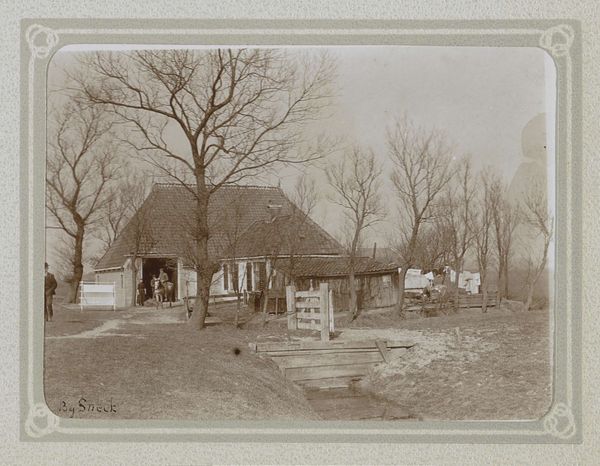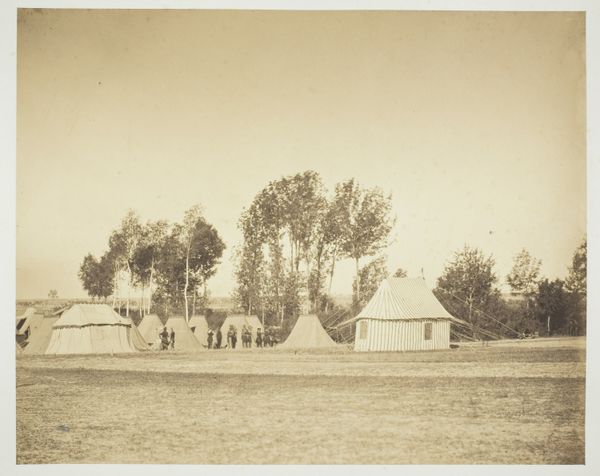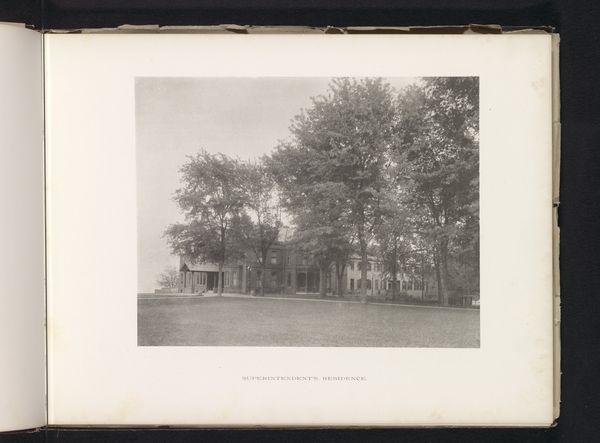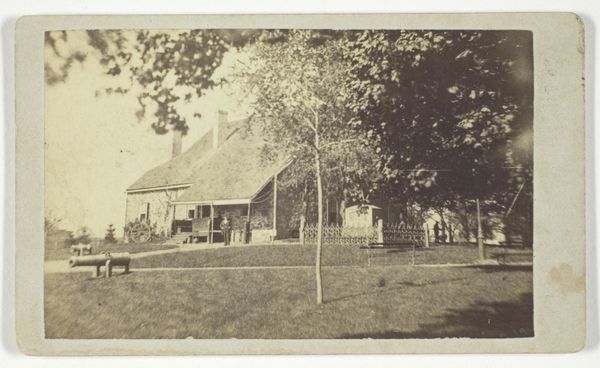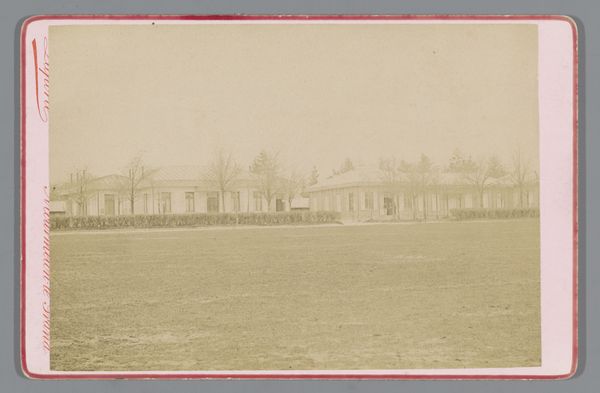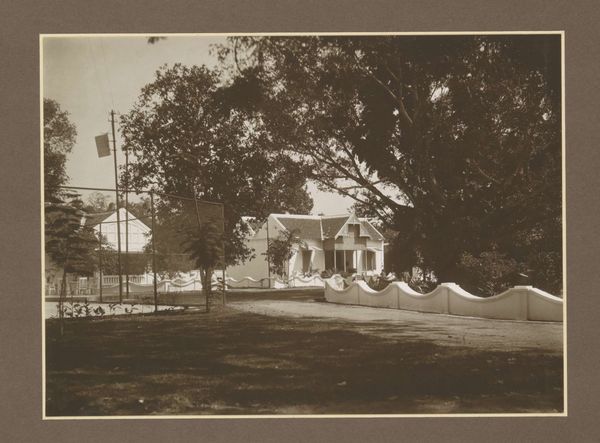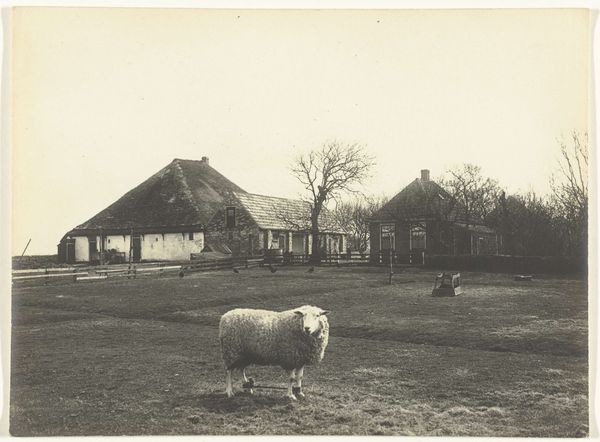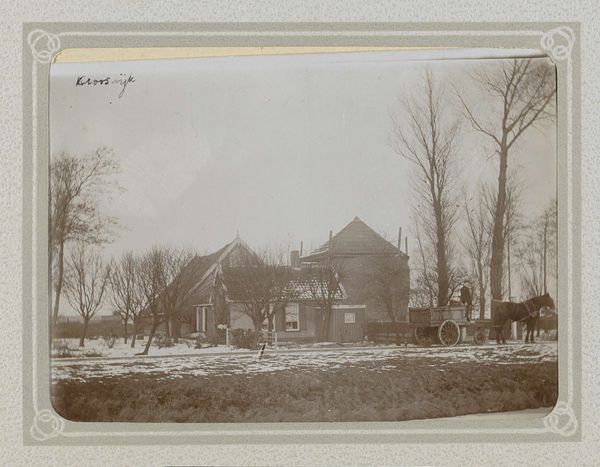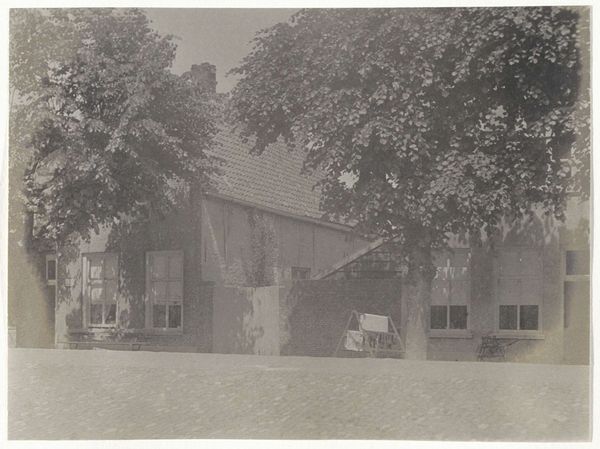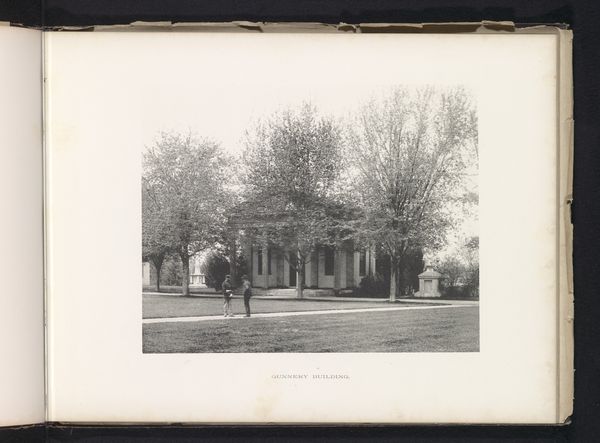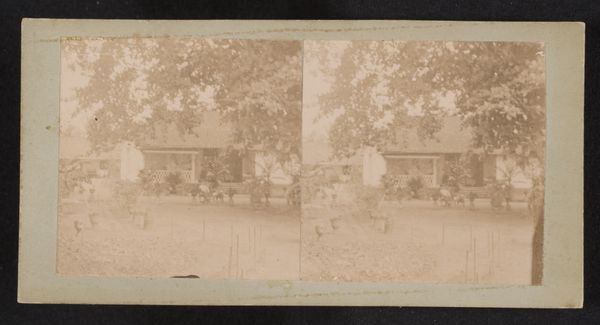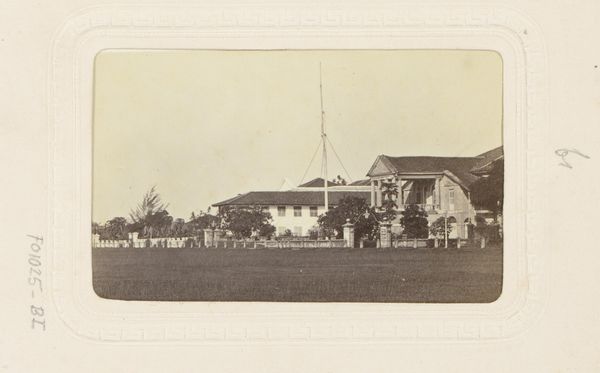
photography
#
still-life-photography
#
dutch-golden-age
#
landscape
#
photography
#
historical photography
#
19th century
Dimensions: height 83 mm, width 240 mm
Copyright: Rijks Museum: Open Domain
Curator: This photograph, dating to before 1915, is titled "Gezicht op een boerderij in Friesland"—View of a farm in Friesland. Editor: It strikes me immediately as remarkably serene. The tonal range is so subtle, almost monochromatic, and the composition is quite balanced and ordered. It evokes a feeling of calm stability. Curator: Precisely. Friesland, being a northern province of the Netherlands, had its particular socio-economic dynamic heavily tied to agriculture, particularly dairy farming. The photograph aestheticizes that relationship between the landscape and the livelihoods of the people. This kind of idyllic rural scene helped shape ideas about Dutch national identity. Editor: I see your point, and there’s certainly a cultural context. Yet consider the pure pictorial structure here. The strong horizontals—the lines of the land, the buildings, and even implied in the lower clouds—counterpointed by the verticals of the trees. And the rhythm created by the placement of the cows. It’s a brilliant arrangement of forms. Curator: One could suggest that this organization, which echoes established compositional structures found within Dutch Golden Age painting, particularly landscapes, further served the function of presenting a very specific narrative about rural life, glossing over social and economic issues to propose a unified, pastoral ideal. Editor: Yes, the influence of that aesthetic is evident. Looking closely at the texture too. Even in this reproduction, you can appreciate the gradation in tone, from the velvety darks in the foliage to the misty almost translucent quality in the sky, the way it enhances the mood of gentle, diffused light. Curator: What I find intriguing is thinking about how photographs like these served, especially at a time when rural populations were migrating to urban centers, in maintaining ideas about the virtues of life outside of the metropolis and supporting the myth of the idealized rural nation. Editor: I’d concur. I was focused so intently on composition and its ability to set mood, and it's fascinating to learn how these elements operate as symbols in the grand cultural project, informing the wider discourse.
Comments
No comments
Be the first to comment and join the conversation on the ultimate creative platform.
